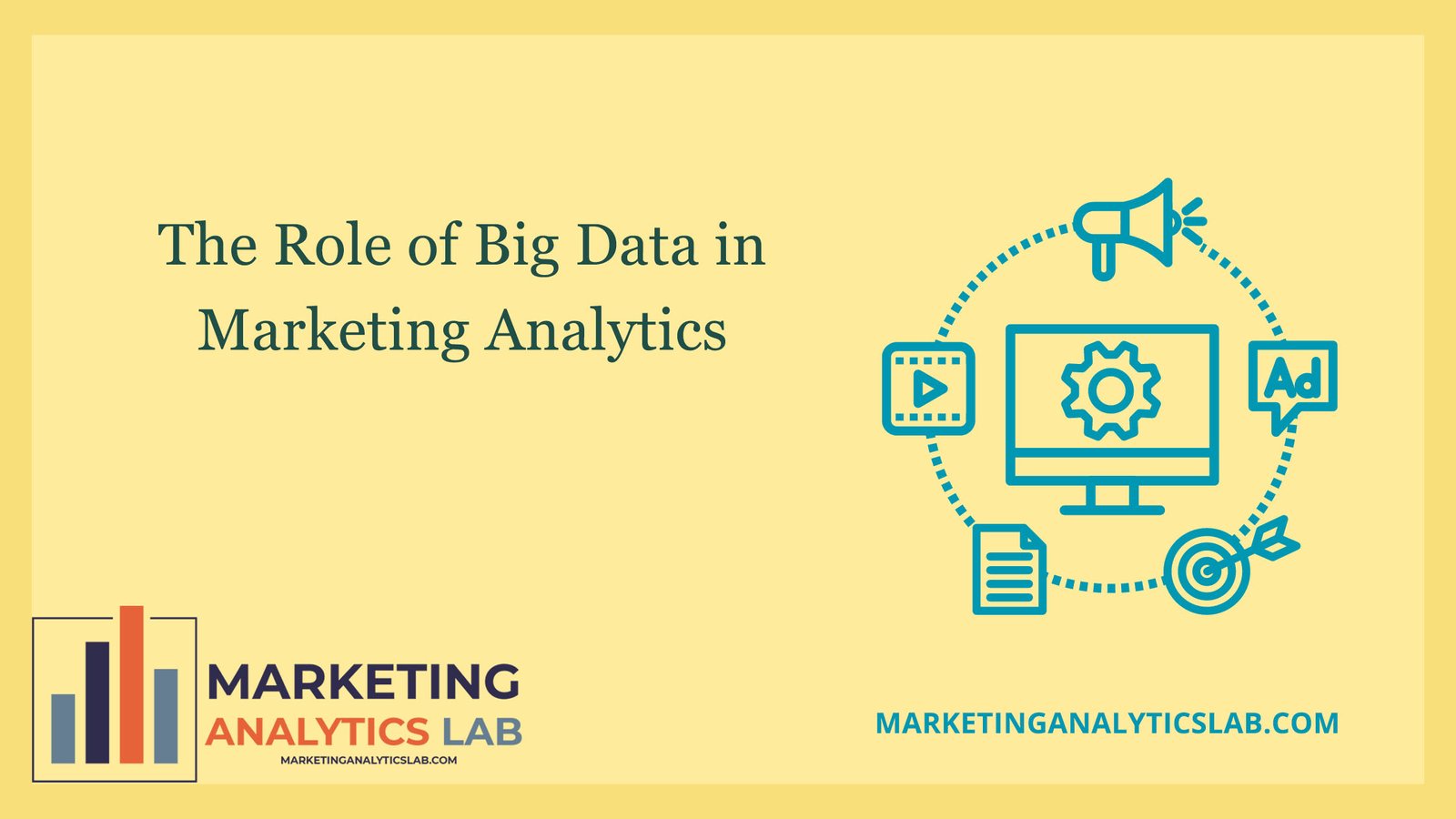The Role of Big Data in Marketing Analytics
Big Data has revolutionized marketing analytics by providing unprecedented insights into customer behavior, preferences, and trends. With the explosion of digital information, businesses can now leverage vast amounts of data to make more informed decisions, personalize marketing efforts, and drive strategic growth. This article explores the role of Big Data in marketing analytics, its benefits, challenges, and best practices for harnessing its power.
- Understanding Big Data in Marketing
Definition: Big Data refers to the large volumes of structured and unstructured data generated at high velocity from various sources. In marketing, this includes data from social media, website interactions, customer transactions, and more.
Characteristics of Big Data:
- Volume: The sheer amount of data collected from numerous sources.
- Velocity: The speed at which data is generated and processed.
- Variety: The different types of data, including text, images, video, and sensor data.
- Veracity: The accuracy and reliability of data.
- Value: The actionable insights derived from analyzing data.
- Benefits of Big Data in Marketing Analytics
- Enhanced Customer Insights:
- Behavior Analysis: Analyze customer interactions across various touchpoints to understand behavior and preferences.
- Segmentation: Create detailed customer segments based on demographics, purchasing patterns, and engagement levels.
- Personalized Marketing:
- Targeted Campaigns: Develop personalized marketing campaigns tailored to individual customer preferences and behaviors.
- Dynamic Content: Deliver dynamic content and offers based on real-time data insights.
- Predictive Analytics:
- Forecasting: Use historical data to forecast future trends, customer behaviors, and market conditions.
- Churn Prediction: Identify customers at risk of leaving and develop retention strategies.
- Improved Decision-Making:
- Data-Driven Strategies: Base marketing strategies and decisions on data-driven insights rather than intuition.
- Optimization: Optimize marketing spend, channel selection, and campaign effectiveness through data analysis.
- Real-Time Analytics:
- Immediate Feedback: Monitor and analyze data in real-time to quickly respond to market changes and customer needs.
- Adaptive Strategies: Adjust marketing strategies on-the-fly based on real-time data.
- Big Data Technologies and Tools for Marketing Analytics
- Data Management Platforms (DMPs):
- Overview: Centralize and manage data from various sources to create a unified view of customer data.
- Features: Data collection, integration, segmentation, and activation.
- Customer Data Platforms (CDPs):
- Overview: Create a single customer view by aggregating data from multiple sources.
- Features: Data integration, segmentation, and personalization.
- Big Data Analytics Tools:
- Apache Hadoop: An open-source framework for distributed storage and processing of large data sets.
- Apache Spark: A unified analytics engine for large-scale data processing and machine learning.
- Google BigQuery: A fully managed data warehouse for real-time data analysis.
- Data Visualization Tools:
- Tableau: Provides interactive data visualizations and dashboards.
- Power BI: Offers business intelligence and data visualization capabilities.
- QlikView: Provides interactive data exploration and visualization.
- Machine Learning and AI:
- Algorithms: Use machine learning algorithms for predictive analytics, clustering, and classification.
- Applications: Apply AI for customer segmentation, recommendation engines, and sentiment analysis.
- Challenges in Leveraging Big Data for Marketing
- Data Quality and Integration:
- Accuracy: Ensure data is accurate, complete, and up-to-date.
- Integration: Integrate data from disparate sources for a unified view.
- Privacy and Security:
- Compliance: Adhere to data privacy regulations such as GDPR and CCPA.
- Security: Protect customer data from breaches and unauthorized access.
- Data Management:
- Storage: Manage and store large volumes of data efficiently.
- Scalability: Ensure infrastructure can scale with growing data needs.
- Skill Gap:
- Expertise: Address the need for skilled data scientists and analysts to interpret and utilize data effectively.
- Training: Invest in training and development for staff to handle advanced analytics tools.
- Best Practices for Using Big Data in Marketing Analytics
- Define Clear Objectives:
- Goals: Set clear objectives for what you want to achieve with Big Data (e.g., customer segmentation, campaign optimization).
- KPIs: Identify key performance indicators to measure success.
- Invest in the Right Tools:
- Selection: Choose tools and technologies that align with your data needs and business goals.
- Integration: Ensure tools can integrate with existing systems and data sources.
- Focus on Data Quality:
- Validation: Implement data validation processes to ensure data accuracy and completeness.
- Cleaning: Regularly clean and update data to maintain quality.
- Ensure Compliance:
- Regulations: Stay informed about data privacy laws and ensure compliance.
- Transparency: Be transparent with customers about data collection and usage practices.
- Leverage Advanced Analytics:
- Predictive Models: Use predictive analytics to forecast trends and behaviors.
- Machine Learning: Apply machine learning algorithms to enhance data analysis and insights.
- Continuous Improvement:
- Feedback Loop: Incorporate feedback from data analysis to refine strategies and approaches.
- Adaptation: Stay agile and adapt to new data insights and market changes.
- Conclusion
Big Data plays a transformative role in marketing analytics by providing deep insights into customer behavior, enabling personalized marketing, and driving data-driven decision-making. By leveraging advanced technologies and tools, businesses can unlock the full potential of Big Data, optimize marketing strategies, and achieve better outcomes.
However, effective use of Big Data requires addressing challenges related to data quality, privacy, and integration. By following best practices and investing in the right tools and expertise, businesses can harness the power of Big Data to stay competitive and drive growth in today’s data-driven world.

